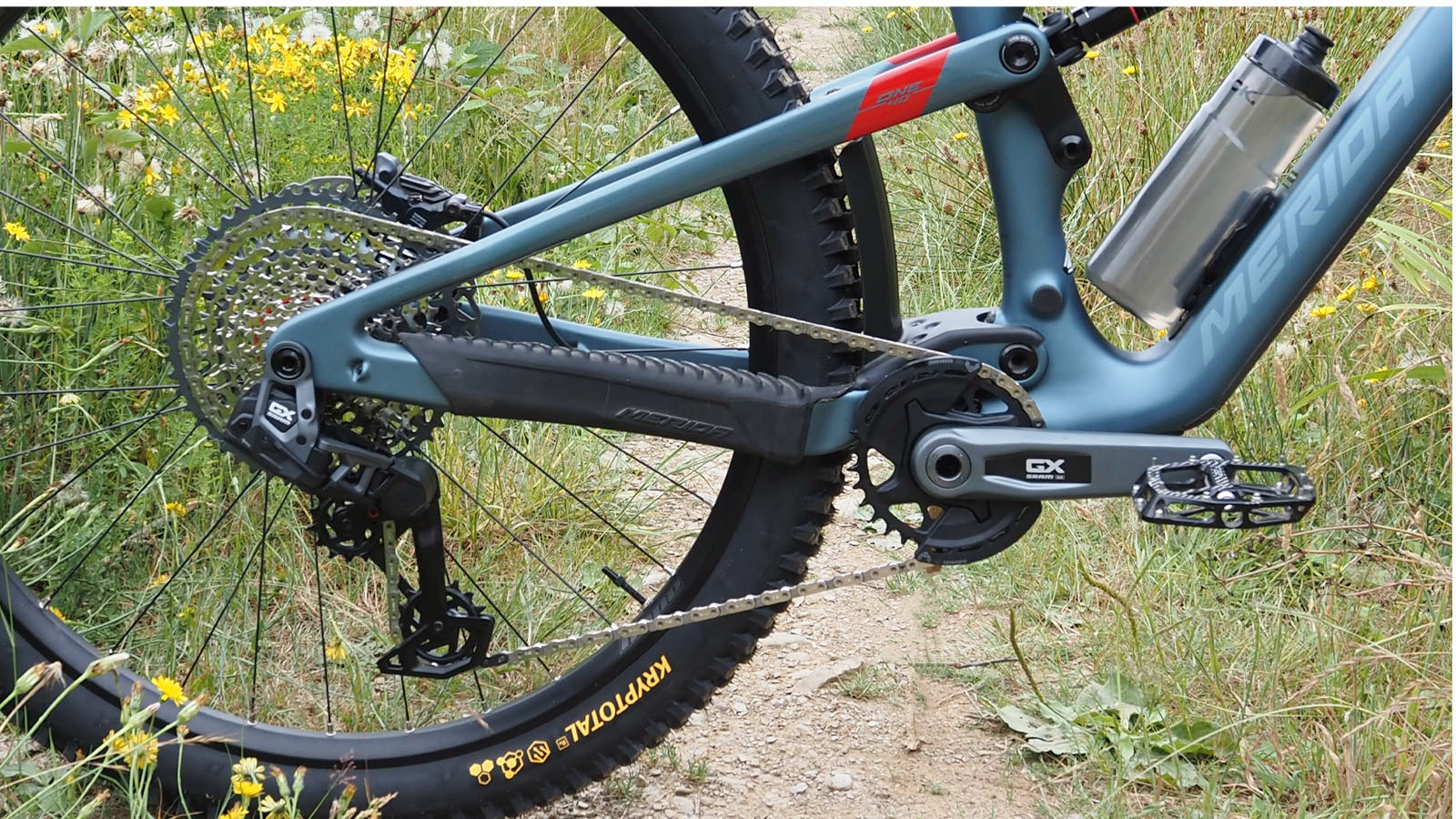
It was back in March of this year when SRAM first introduced their revolutionary T-Type Transmission drivetrain for the brand's top tier XX, X0, and XX SL levels, which likely sounded the death knell for the derailleur hanger in the process. Today the GX incarnation of T-Type Eagle Transmission joins the party, bringing the hanger-free, precision shifting, wireless mech tech to the brand's mid-tier level. Released in tandem are the Bronze tier brakes, which come in both Level and Code versions designed to compliment GX Transmission.
In case you missed the noise when the first T-Type Transmission systems were released, the drivetrain technology completely does away with the derailleur hanger, so the rear mech now bolts directly to compatible UDH (SRAM's universal hanger standard) equipped frames with a system the brand calls 'Full Mount'. By attaching directly to dropout and axle rather than a hanger, SRAM removed the need for adjustment screws to get the mech perfectly aligned. And of course, being electronically controlled by a Bluetooth shifter (which SRAM now calls a AXS Pod), there's zero indexing faff either.
As well as a simplified installation, the massive advantage over traditionally setup drivetrains (including wireless) is Transmission's ability to seamlessly shift when under heavy loads such as hammering out of the saddle climbs – which is also a huge benefit for drivetrain destroying e-MTBs.
So do all the benefits from the top of the range versions translate to this more affordable groupset? We got our hands on a pre-release setup to give you our verdict.
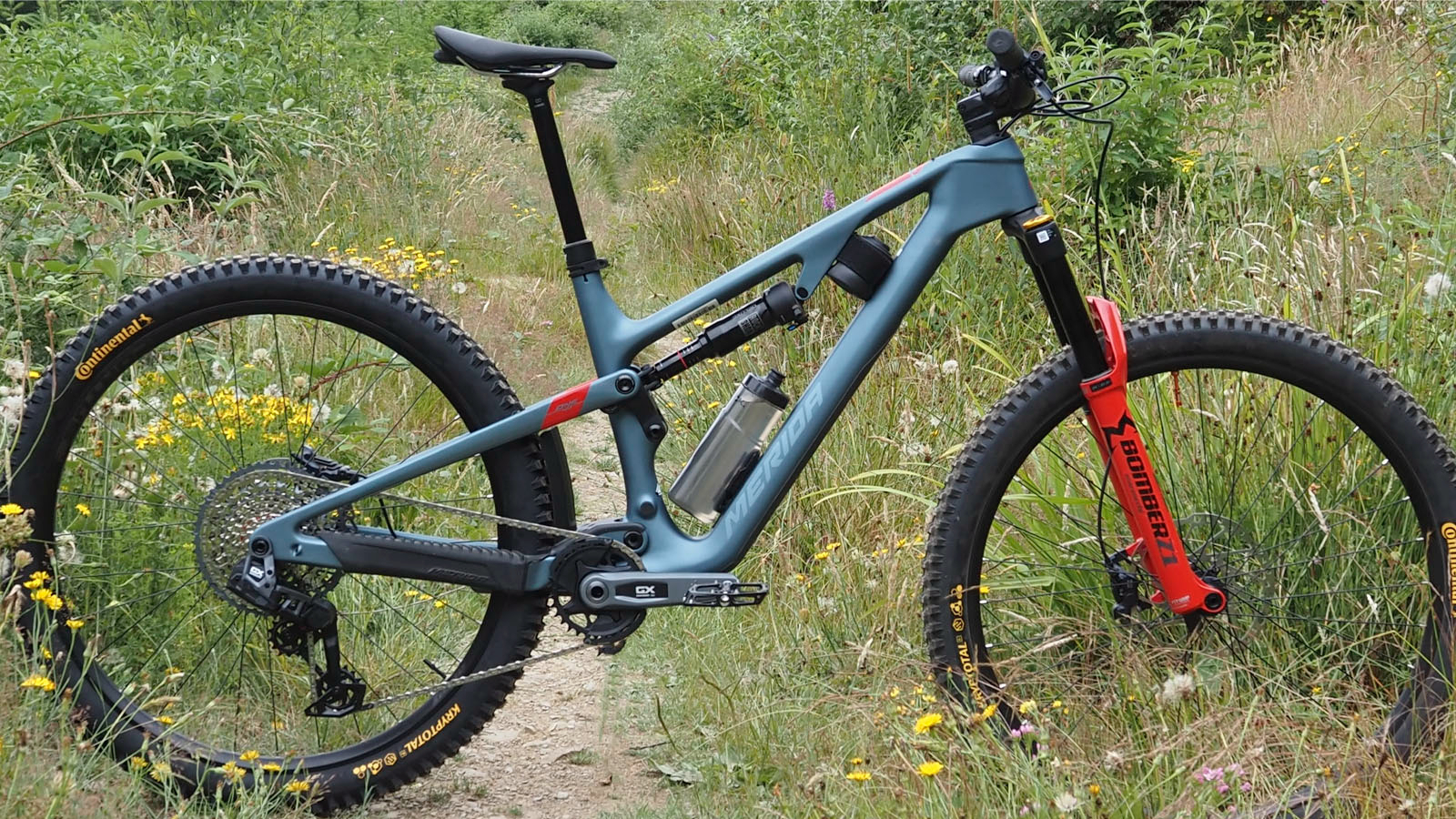
Design and specifications
GX Eagle Transmission sits at the bottom of SRAM's T-Type Transmission range, but in the middle of their conventional MTB components with SX and NX below it. As you'd expect, the component package is heavier than the Transmission levels above with the groupset weighing in at 2,043g (not including the bottom bracket) – which is only 152g heavier than the much pricier X0 at 1,891g and they're both designed to be trail/enduro tough. Compared to the 1,841g weight of the conventional GX AXS groupset, Transmission comes in at 202g heavier.
The GX Transmission derailleur looks burlier and more utilitarian than its higher-priced cousins and is built around a steel rather than aluminum inner cage. Replaceable skid plates protect the upper section of the mech and unlike fancier Transmission and previous AXS models, the battery is fully enclosed making it much less unlikely to eject into the undergrowth following a crash or knock. Direct mounting to the frame enables the Transmission derailleur to sit further inboard than hanger-mounted mechs, which also helps guard against potential impacts. Like the X0 version, GX misses out on XX's 'Magic' lower jockey wheel that will still spin with debris caught between its spokes.
SRAM describe the cranks as a "balance of form and function", and with their semi-polished 'Dark Polar' gray finish they definitely look far more workman-like than pretty. Made from forged aluminum throughout, the Dub standard crankset comes with a replaceable 32T chainring, though separate Direct Mount chainrings are also available for compatible cranks in 30, 32, and 34-tooth options. Separately mounted and removable composite bash guards come fitted to the chainring, while crank arm-only options are also available for e-MTB.
Unlike the black cogs of the standard GX AXS cassette, the 10-52T Transmission version has a silver-colored nickel-plated finish which looks good and is designed to run more quietly. A red band runs inside the 21T cog which is designated as the 'setup cog' – more on that later. Like the other T-Type cassettes, the GX model has 38 and 44-tooth cogs for smaller jumps between the cogs at the top end of the cassette. An alternating X-Sync tooth pattern is designed to work in conjunction with the Flattop chain to massively improve shifting under power.
Last but not least comes the shifter, or as it's now called, the AXS Pod. While SRAM sent us the Ultimate version for the purposes of this test, GX comes with the standard Pod model. SRAM say both options offer the same performance and function, but the Ultimate model has a shiny faceplate and an alternate set of convex shifting buttons. Unlike the rocker switch on conventional AXS MTB components, the Pod has two separate concave buttons for shifting up or down – the direction of shift can be configured in the AXS app. There are three options for mounting the Pod – via Matchmaker to the brake lever clamp, the ring-shaped Infinity Clamp, or the adjustable Bridge Clamp that we've been testing here.
One thing to note is that with the exception of the Pod controllers (which can be used to upgrade existing AXS setups), Transmission components are not compatible with previous AXS versions. However, all Transmission groupsets are compatible with each other, so mixed and matched T-Type components are fine.

Installation and set up
Many aspects of installing the GX Transmission (and other T-Type models) are the same as a conventional AXS drivetrain, but there are a few areas that are unique to the new system. All Transmission drivetrains use SRAM's Dub standard bottom brackets which have options for just about every BB setup.
If you need to add a Dub BB, installation and spacer setup are the same as SRAM recommends for standard drivetrains, while crank and cassette installation are identical too. Obviously, without a hanger fitting the derailleur is very different though and you need to completely remove the UDH hanger from the dropout. The Full Mount interface on the mech then replaces the hanger with the dropout neatly sandwiched between its two faces. A hollow retaining bolt then secures the hanger in place which is internally threaded to house the 12mm axle and secure the rear wheel.
The derailleur has two positions (marked A and B) that must be selected correctly for the system to function properly, while the chain needs a specific number of links depending on your chainstay length. You need to check SRAM's online user manual or the AXS app to determine the correct options for your bike.
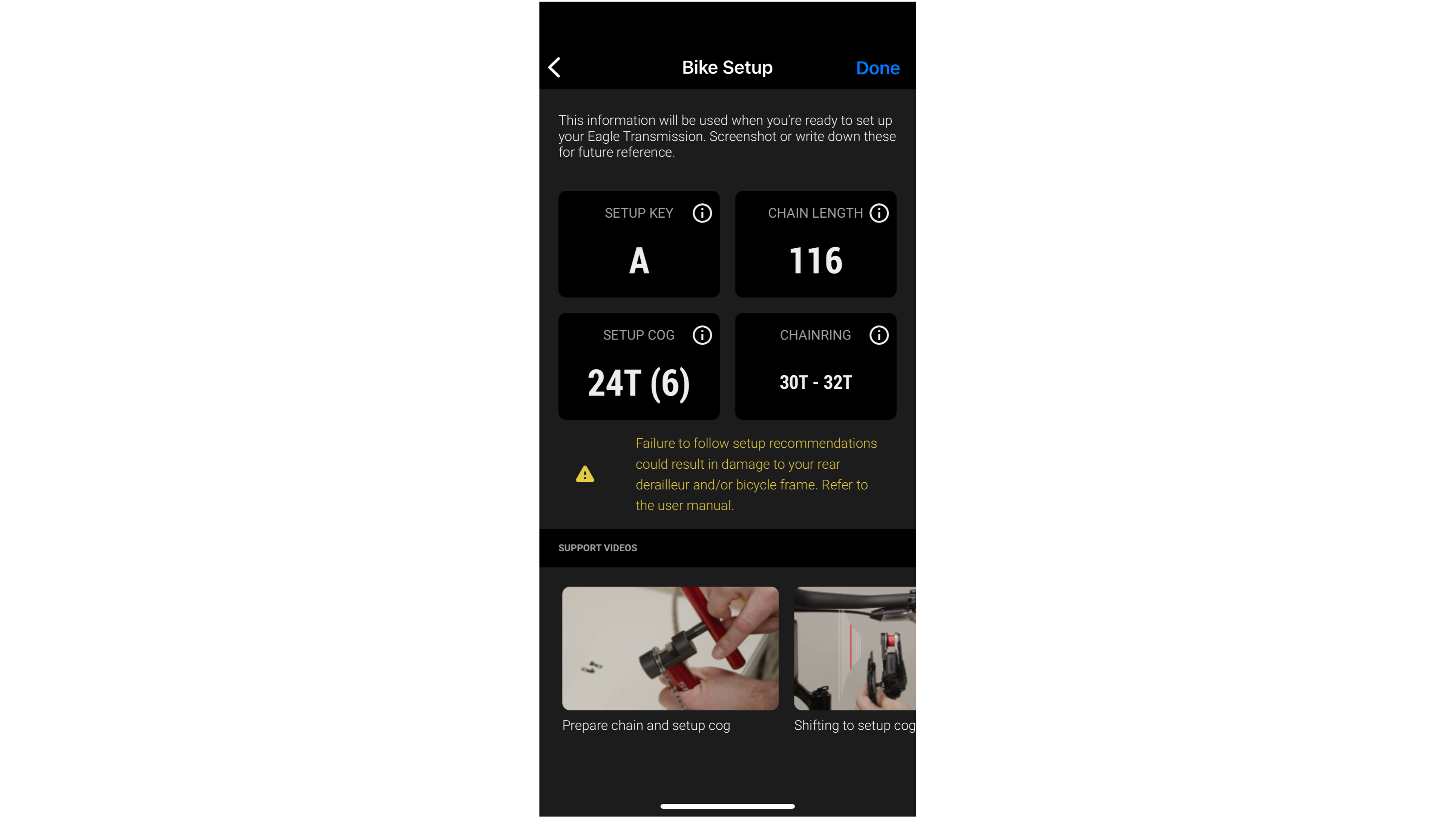
Once you've installed the chain, you'll need to stick it on the 21-tooth cog of the cassette which is handily marked with a red band (though less handily, some bikes use the 24T cog – again, check SRAM's instructions). With the derailleur in its extended and locked forward position, you then need to take up the slack in the chain and check that two marks on the Full Mount and the mech itself line up, then unlock the derailleur.
Assuming you've installed the shifter Pod too, if the chain is running nicely on the 21 (or possibly 24) tooth cog, you should be ready to go. If not, you'll need to make some micro-adjustments via the Pod or the AXS app to get it all running smoothly. Don't be tempted to get the chain running as well as possible across the entire block though (as I did at first), as the red-ringed cog is designed to give you the optimum setup position.
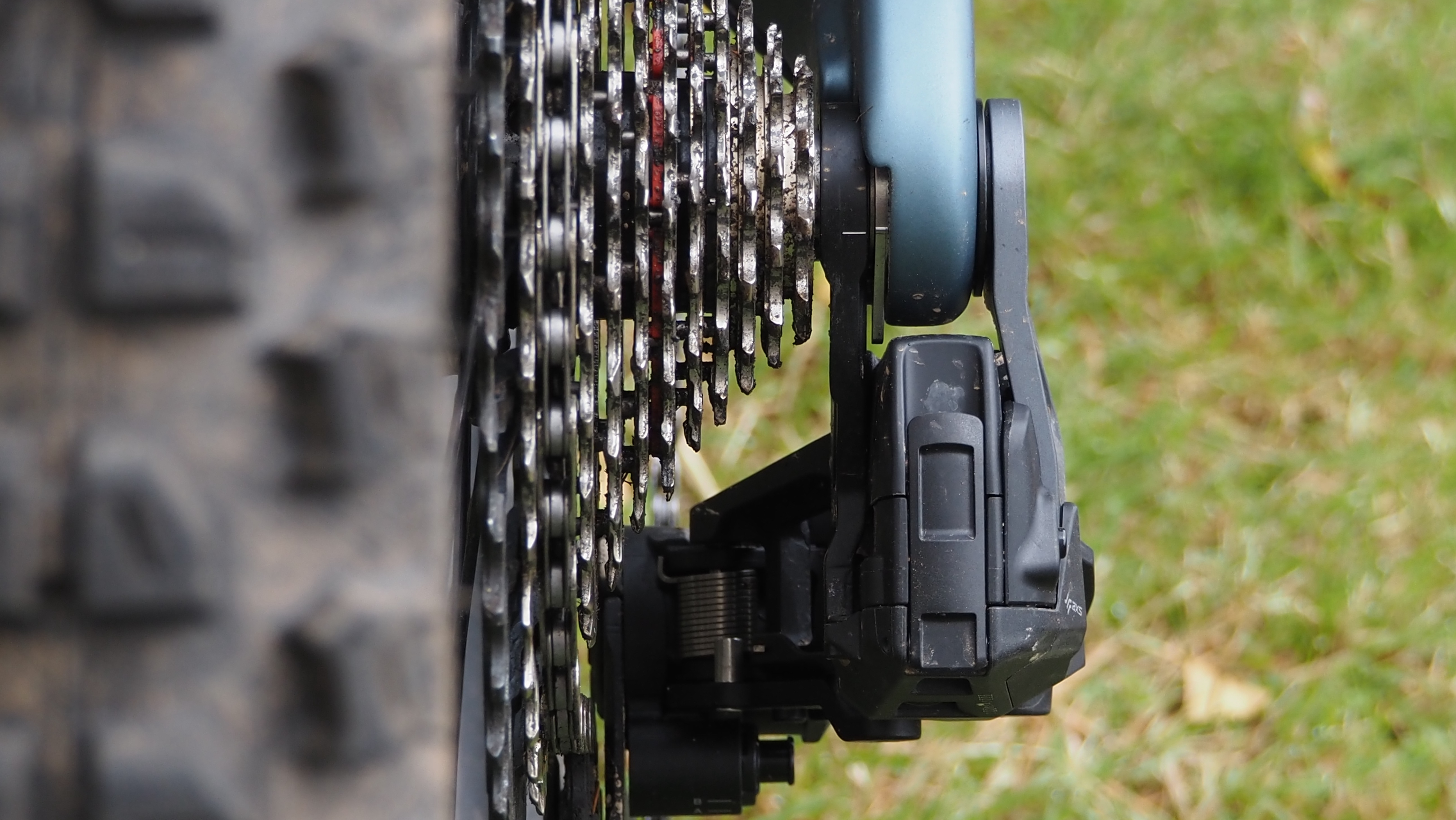
Ride and performance
I received the GX Transmission just a couple of weeks before its release, so to get maximum riding time on it, I recruited hard pedaling, big miles tester, James Watkins, to the cause too. Between us, we racked up as many miles as we could in the time available and I'll be putting many more miles on GX after publication of this review and updating it with any new findings.
The full-mount attachment method allows for a much more robust derailleur interface. Tucked out of harm’s way under the rear seatstay, the whole derailleur is allowed to rotate backward if it does take a knock from the front. The robust attachment method, along with enhancements to the teeth profiling on the rear cassette and Flattop chain results in an impressive system that manages smooth gear changes even under heavy loads. You no longer need to back-off your pedaling efforts to avoid putting too much strain on the system when changing to an easier gear, which is really noticeable and beneficial when tackling steep climbs. Gear changes even under full power efforts were effortless and carried out with no complaint whatsoever. The result is a more efficient climbing experience, with worry-free gear changes, allowing you to get on with your pedaling efforts. Downshifts are executed with the same rapid efficiency, and the accompanying buzz of the derailleur servo-motor becomes strangely satisfying too.
It took a bit of time to get the best position for the Pod shifter, though I was running it with Shimano brakes. James in particular struggled for a while to find an ergonomic position that he was comfortable with. There's plenty of adjustment on offer from the Bridge Clamp, but the Pod does protrude quite far beneath the handlebar and he did find it a stretch for his medium-sized hands to reach the lower button. This was much less of an issue for me with my slightly bigger palms and digits.
The Pod's extended position could well make it vulnerable to damage with its stalk-like clamp though, and we wondered if it will survive a knock from the knee in the event of a tumble. If that were to happen, let’s just hope you can find the Pod in the undergrowth. The Pod and clamps are all modular and replaceable should something break or disappear though.
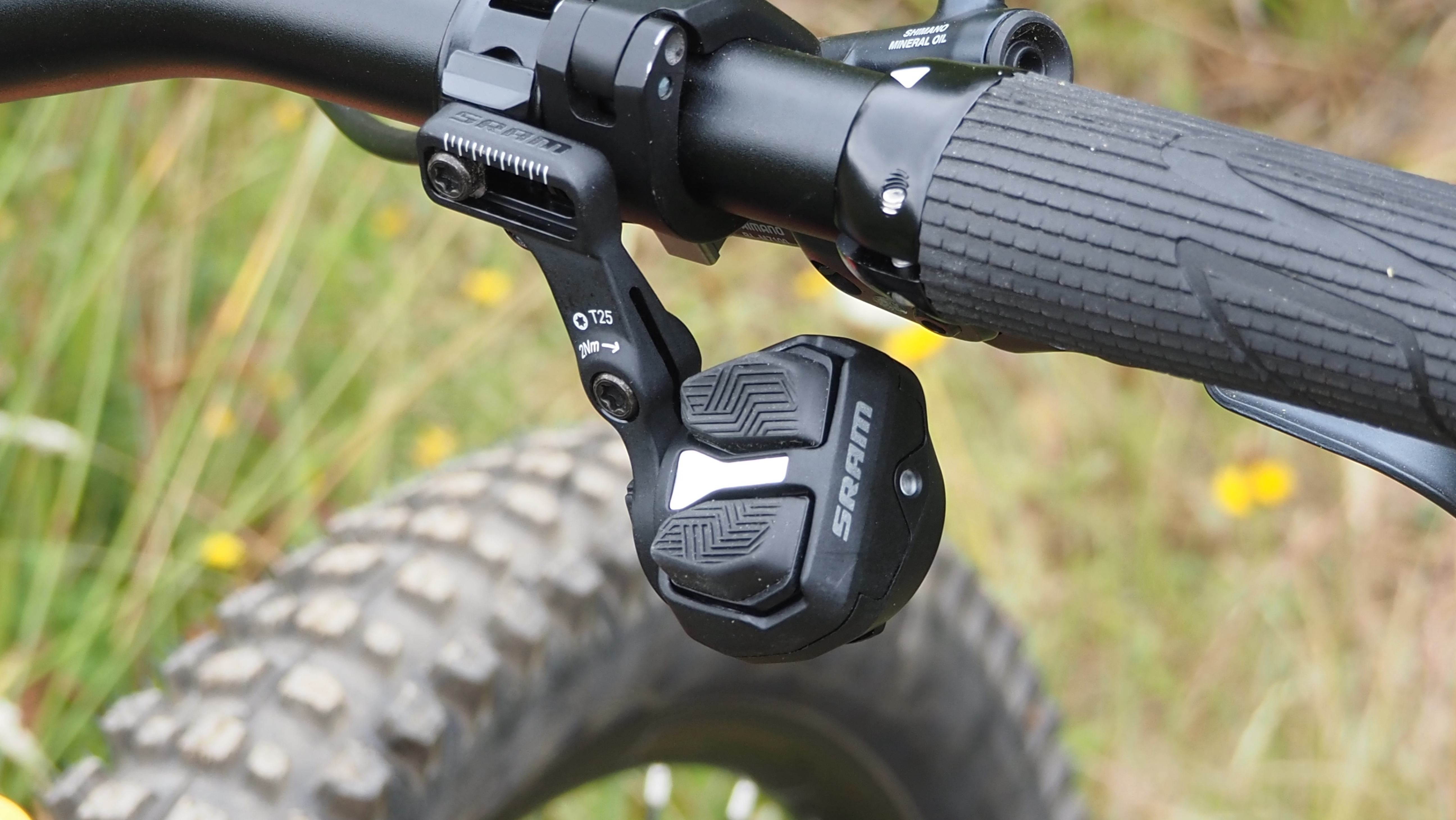
Verdict so far
SRAM describes the GX Eagle Transmission as a "diligent workhorse that never complains" and after riding the new system, it's hard to argue. Direct and precise mounting to the frame eliminates the need for adjustment screws and though slightly different to what most of us are used to, it's almost foolproof.
The shifting itself is flawless and the ability to shift up when straining even the most brutal climb is a massive upgrade on existing AXS and any other non-T-Type setup.
The industrial look could well be a negative for some, particularly the cranks, which don't look as fancy as you might expect after shelling out over a grand. There's also the potential crash vulnerability of the AXS Pod too, though the same issue affects XX and X0 and we're yet to hear of problems after several months of use. The older AXS rocker shifter is compatible with T-Type though, so if anyone particularly crash-prone or concerned could run that instead.
Yes, we're still testing GX Transmission to see how it performs long-term, but our initial findings are that it's an impressive upgrade for UHD-compatible bikes.
Test conditions
- Temperature: 65 to 77 degrees F / 18 to 25 degrees C
- Conditions: Hard pack with muddy sections, roots and loose rocks
- Trails: Natural undulating singletrack with sharp climbs and descents







